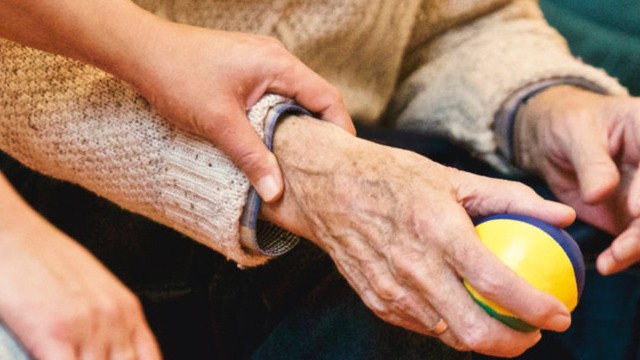Opinion: Is the government doing enough to protect health care workers and long-term care residents?
Published April 2, 2020 at 11:59 pm

Our government is taking a reactive versus proactive stance in protecting our community, especially our most vulnerable seniors and all health care workers in all health care settings (not just hospitals).
I am the granddaughter of a resident at local Mississauga long-term care home. My grandmother’s 100th birthday is this Saturday and we hope to all celebrate with her in person once we are all able to.
Unfortunately, someone who tested positive for COVID-19 visited the home on an undisclosed date several weeks ago. I understand that the resident who was visited was isolated and tested negative, and that staff in close contact were also isolated. I also understand from my conversations with Peel Public Health and the long-term care facility that these measures along with increased infection control were the only measures they recommended to the home.
Considering the news about COVID-19 in nursing homes, and despite the measures already taken in long-term care (such as banning visitors), this is not enough.
The Ontario government released a statement dated March 16th that outlines long-term care homes will “only allow essential visitors – people visiting residents who are very ill or require end-of-life care – until further notice”. This was just a little over two weeks ago – we are currently at over 40 deaths in nursing and retirement homes across Ontario.
As of April 1, 2020, there were 40 dead from COVID-19 in nursing homes and retirement homes across Ontario, plus two more reported today. This stark number proves that more needs to be done to protect our most vulnerable residents.
We need to protect our most vulnerable seniors and all health care workers in all settings (not just hospitals) where there is close contact with residents/patients. This can include but is not limited to long-term care, home care, primary care, and health clinics.
What is especially important to note is that individuals in these settings may be asymptomatic and inadvertently spreading the virus, in addition to the fact that community transmission is at an overall 67%.
A Registered Nurses Association of Ontario (RNAO) report states that “the evidence of asymptomatic infection of COVID-19 necessitates that all health-care workers facing patients, residents and clients wear a surgical mask at all times“.
The RNAO has taken the lead in protecting our essential health care workers and has recommended that nurses wear masks.
Currently, nurses at some hospitals are provided with two masks per shift (regardless of whether they are dealing with confirmed or suspected COVID-19 patients), but long-term care and home care fall under provincial and federal jurisdiction and the governments are not recommending that those workers wear masks.
“Clearly, there is a link between lack of proper protection and mounting infection clusters in nursing homes,” another RNAO report reads.
“RNAO has been sounding the alarm bell on this fear for several weeks. The time is NOW to ensure all nursing homes are provided with sufficient quantities of surgical masks and other essential PPE, so that all staff wear one at all times – to prevent outbreaks and NOT after an outbreak as it currently is happening”.
It should also go without saying that these health care workers and residents may also be asymptomatic, and in a long-term care facility, this has shown to have devastating consequences.
Another recent document from Ontario Health suggests that all providers may wear a mask if community spread is suspected. At this point, all long-term care, home care and general health care settings should be treated as if there is an outbreak to protect our front line, and the residents, patients, and clients.
The death toll is escalating, and these health care workers and long-term care facilities are being subjected to increased risk. We need to make the changes now to prevent spread among this vulnerable population. It is time to review and reassess the protections considering there is now exponential community spread.
Our government has announced increased measures for screening and increased testing but this is not enough.
Simply screening the public and staff at health care facilities and asking about symptoms or travel history is not enough, as it remains clear the virus is spreading and asymptomatic carriers act as reservoirs for the disease.
Our government also indicates it is doing its part to secure proper PPE, but how will this be rationed for all health care workers, and not just the ones in hospital?
I am hearing from people within our community that health care workers are not provided with masks at all, or some are provided with one or two per week, despite the findings and deaths to date.
The global directive is to practice social distancing whether it be at shelters, grocery stores, workplaces, or walking on the streets – we are all mandated to practice social distancing.
Understandably, it is difficult to practice social distancing in a health care setting, yet health care workers are not provided with masks.
Many families are concerned at the lack of proactive measures and what these governing bodies are doing to protect all residents, clients, patients, and health care workers, where proper PPE and social distancing implementation are not happening.
We should be treating all health care settings and all health care workers with increased protective vigilance and providing everyone in a health care setting with proper PPE for reasons mentioned above and enforcing stricter measures to protect long-term care residents.
The bottom line is the government is dragging its feet on enforcing these initiatives. What is it going to take to make these changes? What will our community death rate look like a few weeks from now if specific measures aren’t taken?
The government needs to enforce new orders to protect and prioritize and health care workers and long-term care facilities.
We cannot waste any more time.
INsauga's Editorial Standards and Policies



